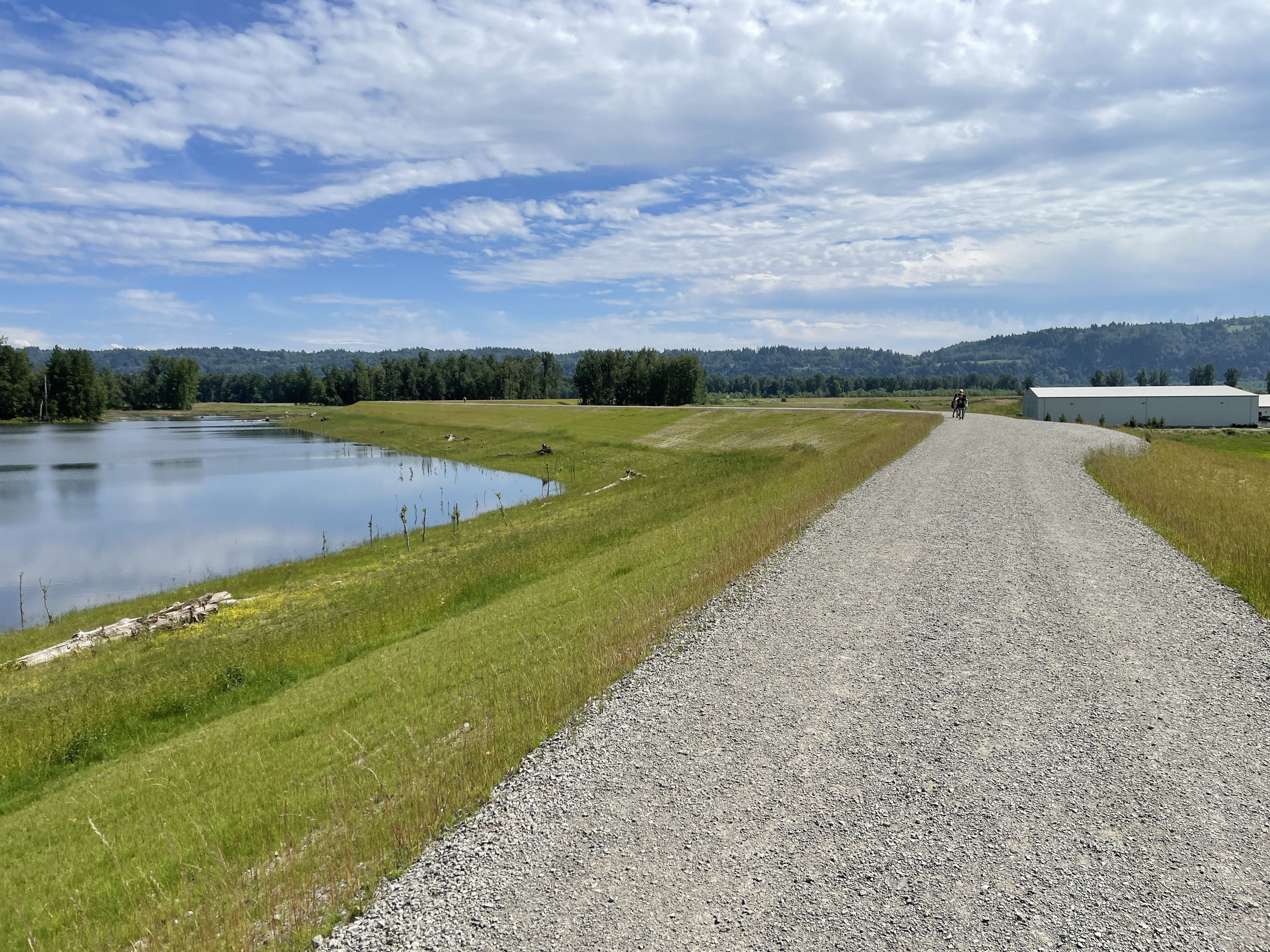Steigerwald Lake Reconnection Project
- June 22, 2022
- John Harrison

For more than 60 years, important resting and rearing habitat for juvenile salmon, steelhead, lamprey, and other fish along the Washington shore of the Columbia River about 20 miles east of Vancouver was blocked by a levee intended to prevent flooding. Today, after three years of construction and several years of planning before that, two miles of that 1950s-era dike have been removed, water-level access to the Columbia has been restored, two new flood protection dikes have been built – perpendicular to the river this time – and more than 900 acres of wetland habitat once again is available to migrating Columbia River fish .
The Steigerwald Lake Reconnection Project was a joint effort of multiple partners managed by the Lower Columbia Estuary Partnership (LCEP), a Portland-based environmental non-profit. Steigerwald Lake National Wildlife Refuge is a part of the Ridgefield National Wildlife Refuge. Both refuges provide prime resting habitat for migratory birds along the Pacific Flyway and, at Steigerwald, important habitat for fish.
Improving the connection of the Steigerwald refuge to the Columbia not only helps mitigate the fish and wildlife impacts of Bonneville Dam, about 25 miles upriver, it also provides enhanced recreation through the construction of new trails and improves access to the Columbia for Gibbons Creek, which supports coho salmon, steelhead, lamprey, and other fish species. Chris Collins, a fish biologist and Steigerwald project lead with LCEP, described the nearly complete project at the June meeting of the Council. Collins said the old levee, which paralleled the river, was built, like others in the Portland/Vancouver area, in response the disastrous Vanport Flood of 1948.
“It did a great job of protecting the area from flooding and protecting the Port of Camas-Washougal industrial park, but it created a bathtub into which Gibbons Creek drained,” Collins said. “Water drained into it, but it was hard for water to get out of it to the Columbia.”
Consequently, the port had to periodically pump accumulated Gibbons Creek water away from its sewage treatment plant, which borders the west end of the refuge. Today, with the new west-side levee in place, the industrial park and the treatment plant are protected. A similar new levee on the east side of the refuge protects an adjacent farm, and on the north side, 1,300 feet of Washington Highway 14 was raised to the level of the 500-year flood plain. Gibbons Creek, which flows into the refuge from the north and was previously confined to a narrow, engineered channel, now can spread out as it enters the refuge and flow across the refuge through Steigerwald Lake and into the Columbia through two new channels. An old and inefficient fish ladder through the previous levee, which never worked well, has been eliminated.
The reconnection project included removing 2.2 miles of levee, building the two new setback levees, rebuilding the trail network (visitation is about 100,000 per year), relocating the parking lot and pit toilet, planting more than 500,000 trees and shrubs, reestablishing 250 acres of riparian forest, mostly cottonwoods, and restoring 1.5 square miles of flood plain. The project significantly increases shallow-water habitat for migrating fish between the mouth of the Willamette River and Bonneville Dam.
The project was initiated in 2013. Construction began in August 2019 and will be complete this September, and reforestation will continue through 2024. The Bonneville Power Administration provided about 80 percent of the funding for the $31 million project.
The project also mitigates for its own climate impacts, Collins said. The majority of trees planted at the refuge are cottonwoods, which Collins described as the ‘workhorses’ of carbon sequestration. “In eight to 12 years, our cottonwoods will sequester an amount of carbon equal to that released [in exhaust fumes] during construction,” he said. Only native species were planted, including wapato, an important first food for Columbia River tribes.
The Steigerwald Reconnection Project addresses multiple aspects of the Council’s 2014 Columbia River Basin Fish and Wildlife Program, including continuing actions to reconnect the river to its floodplains wherever possible in the mainstem, with special emphasis on the estuary and lower Columbia River, and restoring ecosystem function to protect and enhance critical habitat and spawning and rearing grounds in the estuary and lower Columbia.



